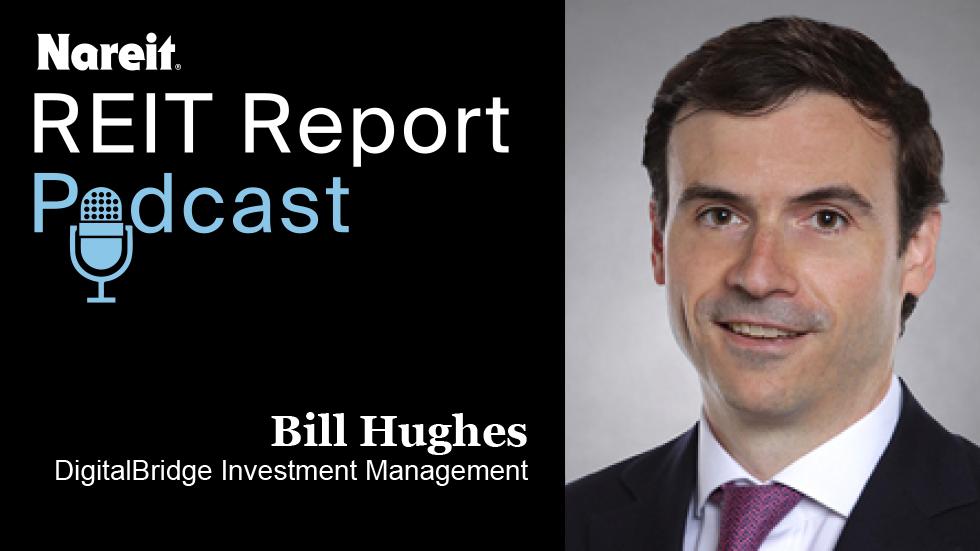
Bill Hughes, managing director of liquid strategies at DigitalBridge Investment Management, was a guest on the latest edition of the Nareit REIT Report podcast.
Hughes discussed some of the trends and developments in digital infrastructure and real estate securities markets today. He noted that the types of real estate businesses that get characterized as digital infrastructure currently compose around 40% of the publicly traded real estate market by value. “That's something that was not true a decade, a decade and a half ago.”
When analyzing digital infrastructure, the same issues that impact traditional real estate—such as supply and demand dynamics, unit level economics, the capital intensity of the asset over time, lease structures, and credit counterparties—should all be considered, Hughes said.
“It's the drivers that are a bit different from the traditional real estate market, but in some ways they're the same because real estate is the real assets to facilitate where business gets done, where people congregate for social activities, where people live. Digital infrastructure is just a different way to satisfy that,” Hughes says.
DigitalBridge invests in REITs through its public securities strategy. “We are effectively giving access to our limited partners to some of these really attractive global scale platforms across data centers, towers, e-commerce infrastructure, and fiber,” Hughes says.
Hughes describes DigitalBridge’s strategy as “very opportunistic…we're looking for things that are not just high quality with long term growth drivers, but we're also looking for things that are mispriced and misunderstood.”
Hughes also says that AI is going to drive demand on the private side of the data center space to start with, and then will really drive growth for publicly traded data centers. He also discusses how digital infrastructure is responding to today’s environmental challenges.
Data centers’ use of energy, he says, is “both highly efficient but also increasingly drawn from renewable and green energy sources. I think that data centers are very much part of the solution to making our economy more energy efficient as opposed to part of the problem.”